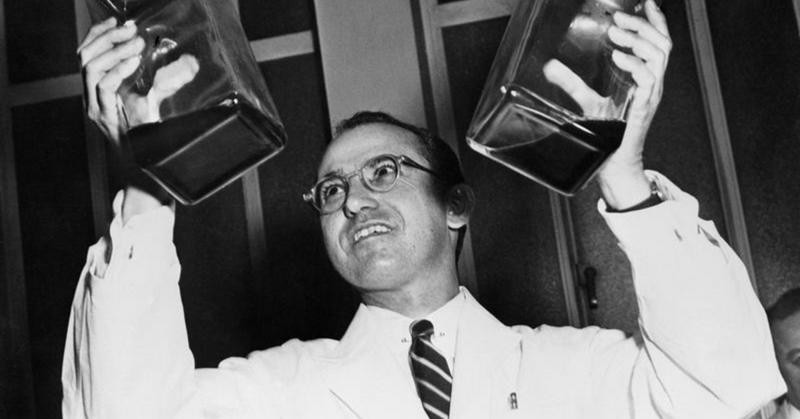Jonas Salk: Inventor Of The Polio Vaccine (Life, Bio, & Stories)
By | March 26, 2021

Poliomyelitis, A.K.A. polio, is a viral infection which damages neurons, specifically motor neurons, weakening the infected's muscles and sometimes resulting in paralysis or death. While the origin of the virus is not well known, it was relatively rare until the 1900s, when outbreaks started popping up all over the world. In the United States, 35,000 people became disabled from complications of polio every year. Fortunately, polio no longer attacks children at the rate it once did, thanks in large part to the perseverance and integrity of one man, virologist and researcher Jonas Salk.
The Polio Crisis
Polio first struck the U.S. in 1916 in New York City and spread wildly across the country throughout the following decades. The virus is transmitted orally, usually through contaminated food or water, after which the infected, usually a child, feels shooting pains down their arms and legs and muscle spasms that contort their bodies in bizarre and unnatural positions. In severe cases, the infected become paralyzed, often starting from the extremities but slowly creeping into the abdomen and chest until the muscles that let them breathe on their own no longer function, confining them to an iron lung.
As thousands suffered and died, the medical community—particularly Jonas Salk—raced to develop a vaccine to fight the epidemic. Salk knew the horrors of the disease well, having been born in New York only two years before the first outbreak. He went on to receive his medical education at New York University and dedicated his time during World War II to the research and development of the seasonal flu vaccine. After the war, he got a job at the University of Pittsburgh, where he won a grant to research a successful polio vaccine in 1948.

The Polio Vaccine
The medical community wasn't exactly on the edge of their seat as Salk tirelessly worked toward a vaccine. He was no titan of chemistry; in fact, some in the field looked down on him as a "kitchen sink" chemist. He was rejected by many labs over the years, though that was likely due to discrimination against Jews.
By 1953, however, Salk announced that he believed he had a viable vaccine, and after two years of trials, he was proven correct. He even put his heart where his mouth was and vaccinated his own children with the trial vaccine. (Fun fact: He became the stepfather of two of Pablo Picasso's children after marrying French artist Françoise Gilot.)
Being a genius scientist with a colorful family made him cool enough, but Salk further shocked the world by releasing the patent to his vaccine, which was worth a whopping seven billion dollars, to the public. When asked by famed interviewer Edward Murrow who owned the patent, Salk famously replied, "The people, I would say. There is no patent. Could you patent the sun?"

The Legacy Of The Polio Vaccine
Unfortunately, it wasn’t all sunshine and rainbows during the vaccine roll out. One manufacturer, Cutter Laboratories, sent a bad batch to 200,000 schoolchildren, paralyzing an estimated 200 while killing 10. This incident led to much stricter federal regulations that have since ensured vaccines "enjoy a record of safety unmatched by any other medical product."
On the bright side, rates of new polio infections began to plummet, and a now-famous Salk was nominated for the Nobel Prize in Physiology or Medicine for his work. Amazingly, he didn't win, but he went on to open the Salk Institute for Biological Studies in San Diego, California, where he and his team made great strides in everything from cancer to Alzheimer's to AIDS research. His institute has produced an impressive six Nobel laureates, two of whom still work there. Meanwhile, polio still exists and spreads rapidly through unvaccinated communities, but outbreaks tend to be limited, thanks to Salk's vaccine. The United States, where 99% of children are vaccinated, has been polio-free since 1979.

